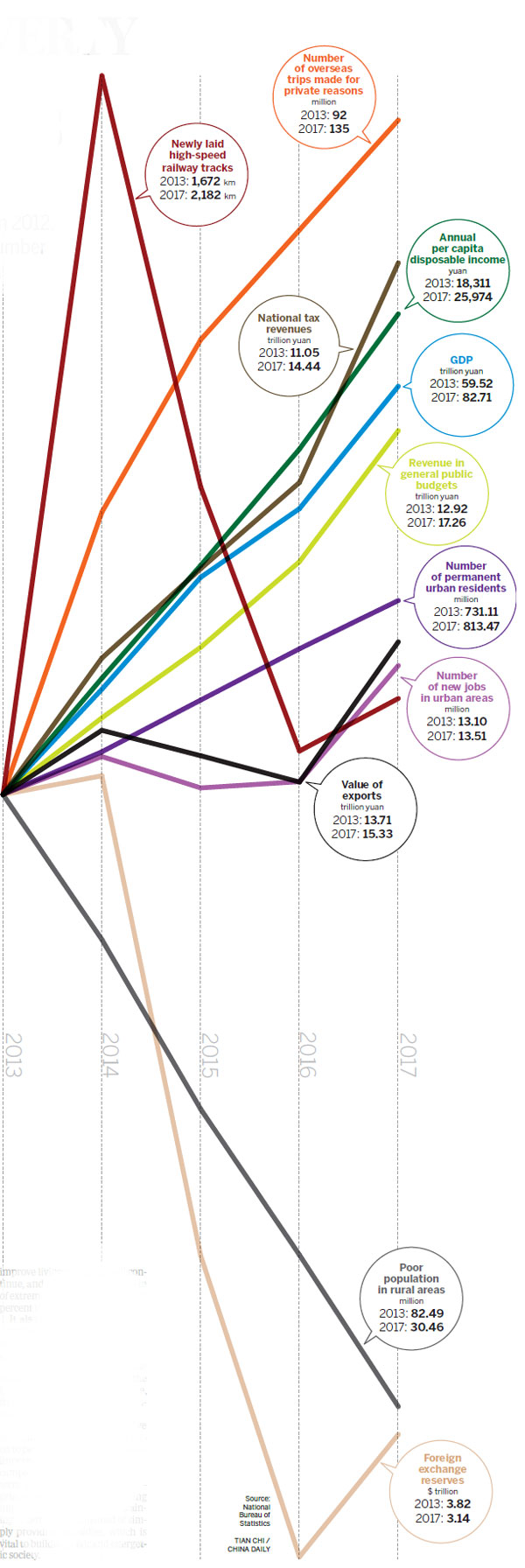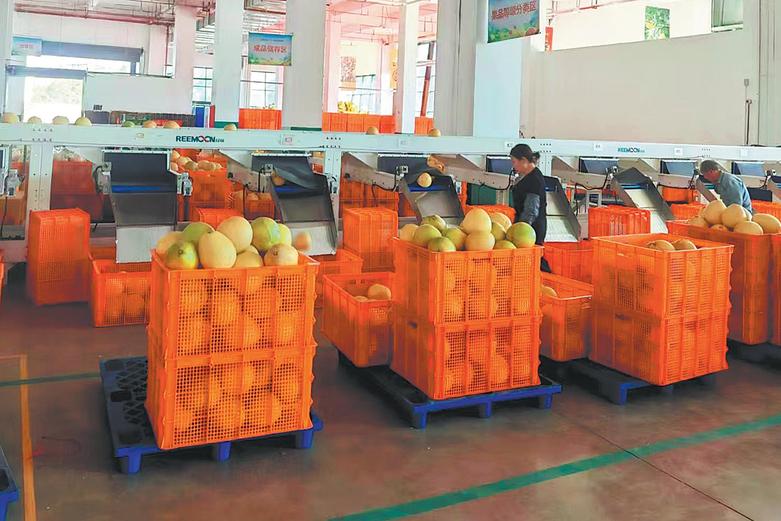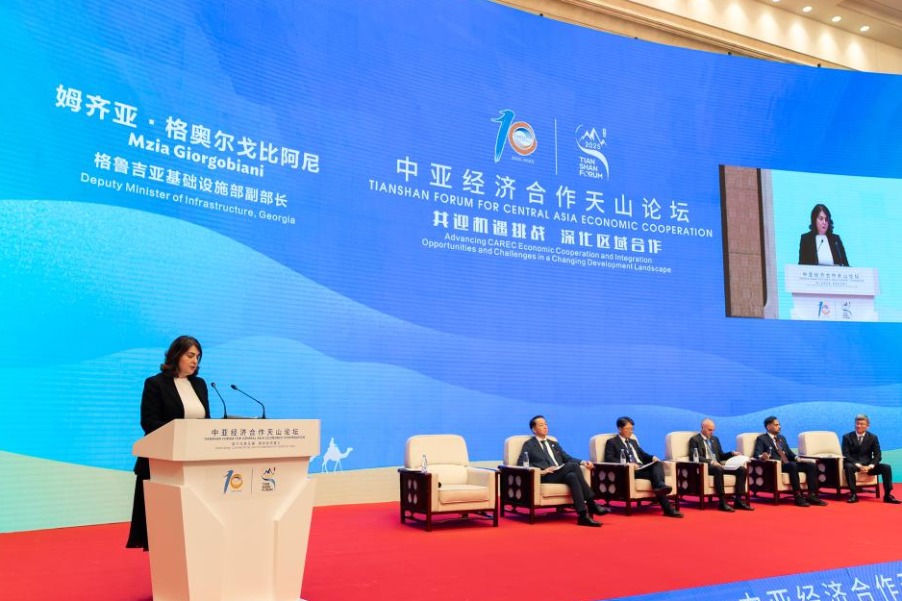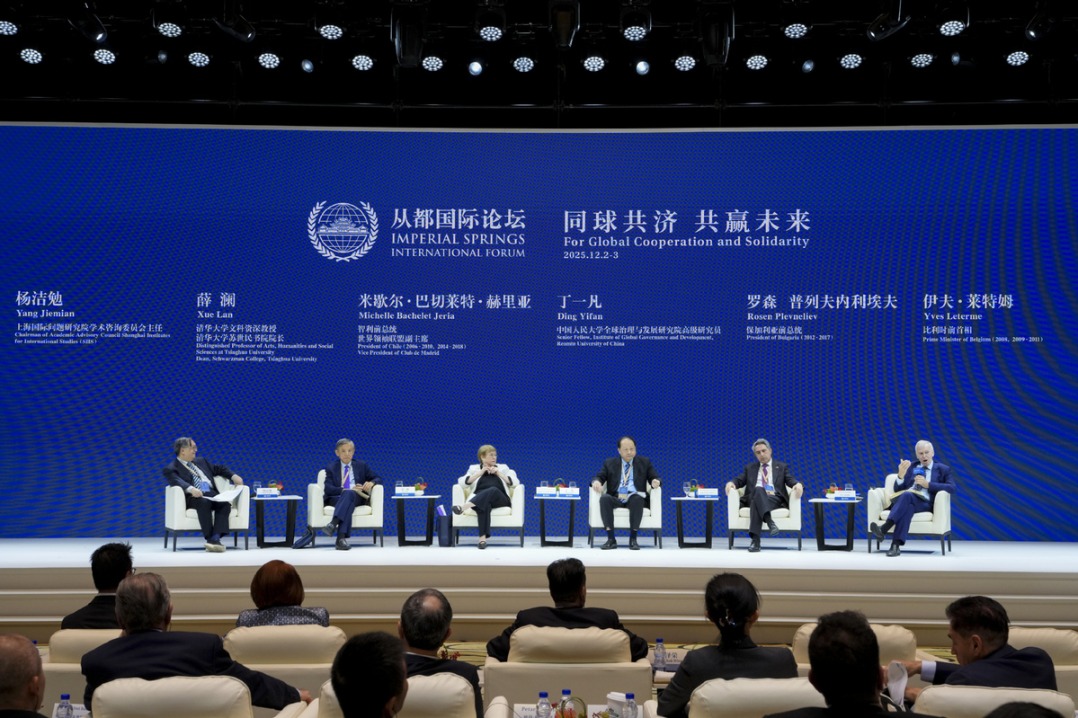Growth, poverty alleviation boost nation's profile

Since the current leadership took office in 2012, the country has seen GDP rise and the number of poor people fall, as Hu Yongqi reports.
Six years ago, Chu Chenggen was a driver carrying loads between his village in Anqing, Anhui province, and Hefei, the provincial capital.
Every morning, Chu, then age 30, got up before dawn. Although he could earn as much as 300 yuan ($47) a day, the long working day meant he didn't get home until late at night, which left little time to spend with his son, who often complained about his absence.
In 2013, Chu secured a job as a driver for a logistics company in Hefei, so he decided to move his family to the city, where his son would also receive a better education.
"There are many employment opportunities for blue-collar workers in the city and hardworking people like me can make a living," Chu said.
"My driving skills helped a lot when I applied for the new job, which finally gave me a chance to spend more time with my son at weekends."
Chu believes Hefei has benefited from the government's proactive employment policy that has helped to create more jobs in urban areas.
More than 13 million jobs have been created in urban areas every year since 2012, while more than 10 million migrant workers have flocked into cities in search of jobs, according to the Ministry of Human Resources and Social Security.
The proactive employment policy has created many jobs for urban residents and attracted migrant workers to cities, Bai Jingming, vice-president of the Chinese Academy of Fiscal Sciences, said.
Employment prospects also improved as GDP rose to more than 82 trillion yuan last year, from 54 trillion yuan in 2012. Meanwhile, growth targets, set in the Government Work Report delivered by Premier Li Keqiang every March, have all been fulfilled in each of the past five years. Last year, GDP grew by 6.9 percent. It was the first time in five years that the rate beat the one recorded the previous year.
Moreover, the consumer price index rose by an average of about 2 percent per annum. The biggest rise - 2.6 percent - occurred in 2013, while the lowest, 1.4 percent, came in 2015, according to the National Bureau of Statistics.
The economy has achieved a high rate of growth, with a low CPI and low unemployment. With the macroeconomic situation in good health, the rate of economic growth and the number of jobs have risen in a coordinated way, which has helped to improve people's livelihoods, Bai said.
Shortly after their move to Hefei, Chu's wife was hired by a company that sells bamboo flooring, which saw the couple's combined monthly earnings rise to about 12,000 yuan. That enabled them to purchase an apartment in 2015, using their savings of nearly 200,000 yuan as a down payment, and they began paying a monthly mortgage of 3,900 yuan after they received the property certificate.
The family's situation illustrates the surge in average disposable incomes in China over the past five years. According to the World Bank, the country ranked 65th globally in terms of gross national income in 2016, while in 2012, it was 112th.
- China, France agree to launch new round of cooperation on panda protection
- Cracking down on cross-border crooks
- Xi, Macron witness signing of multiple cooperation documents
- Xi says China, EU should be partners
- Xi calls on China, France to expand cooperation in multiple areas
- Courts step up efforts to curb private sector corruption





































